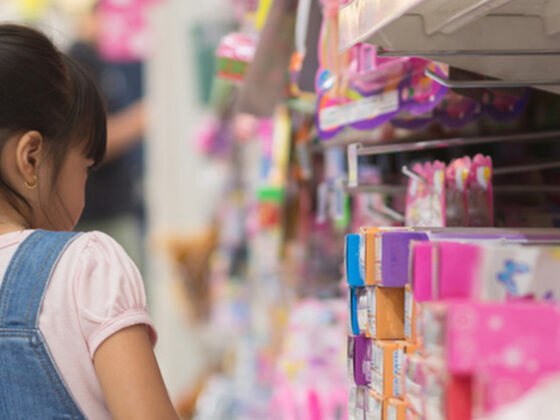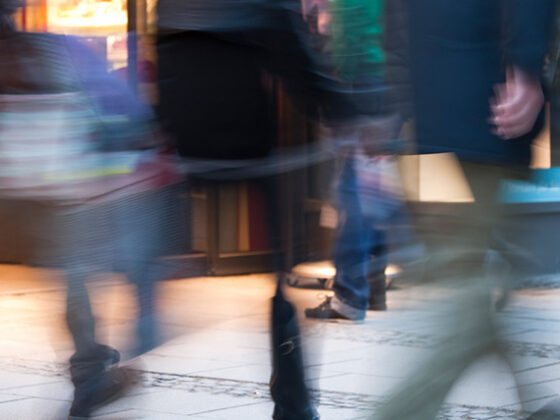We have been talking about redefining retail for a long time, but some retailers are falling behind. In fact, the retail gap between outperformers and the rest of retail is becoming wider, according to McKinsey, and “those that wish to keep up need to speed up.” The report offers great insight into the state of the post-pandemic retail industry, including the fact that pure grocery retailers were not ready and were outpaced by Walmart, Costco, and others. What did these top 25 retailers do that we need to understand and emulate?
Cater to Consumer Needs
Some retail categories struggled, especially those selling business apparel and cosmetics, as more people worked from home and barely bothered to get dressed, let alone put on a suit. Regardless of type, retailers that achieved the most success were those that had some infrastructure already in place before the pandemic hit and were capable of shifting to meet changes in consumer demand.
Home improvement, as a category, was dominant. But some retailers seemed prescient in their pre-pandemic strategies and had infrastructure in place that let them quickly shift to meet changing consumer needs as the pandemic wreaked havoc. Walmart, for example, had already launched their curbside pickup service and had a sophisticated ecommerce platform in place. Costco had already established both ecommerce services and two-day deliver for food in many areas. McKinsey identified 25 forward-thinking companies that accounted for 90% of retail gains. What set these retailers apart? They were able to quickly shift more of their services online without having to build the infrastructure in order to do so.
Deliver Value
The consumer perspective was forever shifted due to the pandemic, and the retailers that thrived were those that could offer consumers value. Value, of course, means different things to different consumers, but the three shifts I’ve observed are: cost, sustainability, and social. Consumers were laid off and losing income. Consequently, they wanted to know they were getting the biggest bang for each buck. At the same time, consumers began to evaluate purpose and meaning on a more existential level, and there was a seismic shift toward sustainability. And of course, in the midst of the pandemic, we had social justice issues playing out before our eyes that caused a measurable consumer shift in choosing retailers whose values aligned with their own.

Leverage Technology to Meet Consumers Where They Are
One of the most interesting statistics to come from the McKinsey report had to do with grocery retailers. As an industry, grocery lost one percent of their revenues, which is obscene given the fact that grocers were one of the essential industries that never had to close. During the pandemic, many people began cooking at home more and even embraced cooking as a way to pass the time. So how did grocers not explode during the pandemic?
According to McKinsey:
The shift from in-store shopping to grocery delivery – combined with consumers’ increased price-consciousness, substantially higher store-operating costs due to COVID-19 protocols, and investments to support online fulfillment – created significant pressure on margins. Uncertain longer-term growth prospects, due to meal-delivery companies eating into grocers’ revenues and platform players using food as a source of consumer engagement rather than profit, have also likely played a role in the sector’s mediocre performance.
In other words, because grocers were slow to recognize the need to invest in technology before the pandemic, they were caught facing costly infrastructure investments during the pandemic – all while other retailers were able to use food as an experience.
How to Close the Gap
Whether you’re a grocer or any other retailer who does not want to be left behind in the new retail, closing the gap will require a number of changes in strategy, not the least of which is flexibility.
Be clear in your definition of what and who you are.
Are your operational, organizational, and communication strategies aligned with your mission? Do you know what your brand stands for? Do your consumers?
Technology
The retail environment is not done changing. And if you’re not keenly aware of the power technology plays to keep you in the game, it’s time for a very rapid education – and a significant financial investment. Everywhere your brand lives – social media, ecommerce, brick and mortar – needs to be treated as one, integrated unit. Believe me, your consumers don’t see these as separate entities.
Consumer-Centric Focus
Walmart and Amazon will not stop investing in technology and infrastructure and they will continue their attempts to peel away consumers by focusing on convenience and price. But consumers are starving for personal touches; so, find where you can make consumers feel good and be there. We know consumers will pay more for experience. Deliver it.
Re-evaluate Everything
From location strategy to brand partnerships, from the retail space you need to the neighborhoods in which you locate your stores, now is the time to re-evaluate everything. If you are struggling, get tough with your business. Where do you cut? Where do you invest? What kind of mission do you have? How are you engaging with consumers and cultivating consumer loyalty? What can you change to better meet your consumers where they need you to be?
As McKinsey suggests, “Those that act boldly to stage a strong exit from this economic crisis can maintain their edge for a decade or more.”
What are you doing to be bold?




